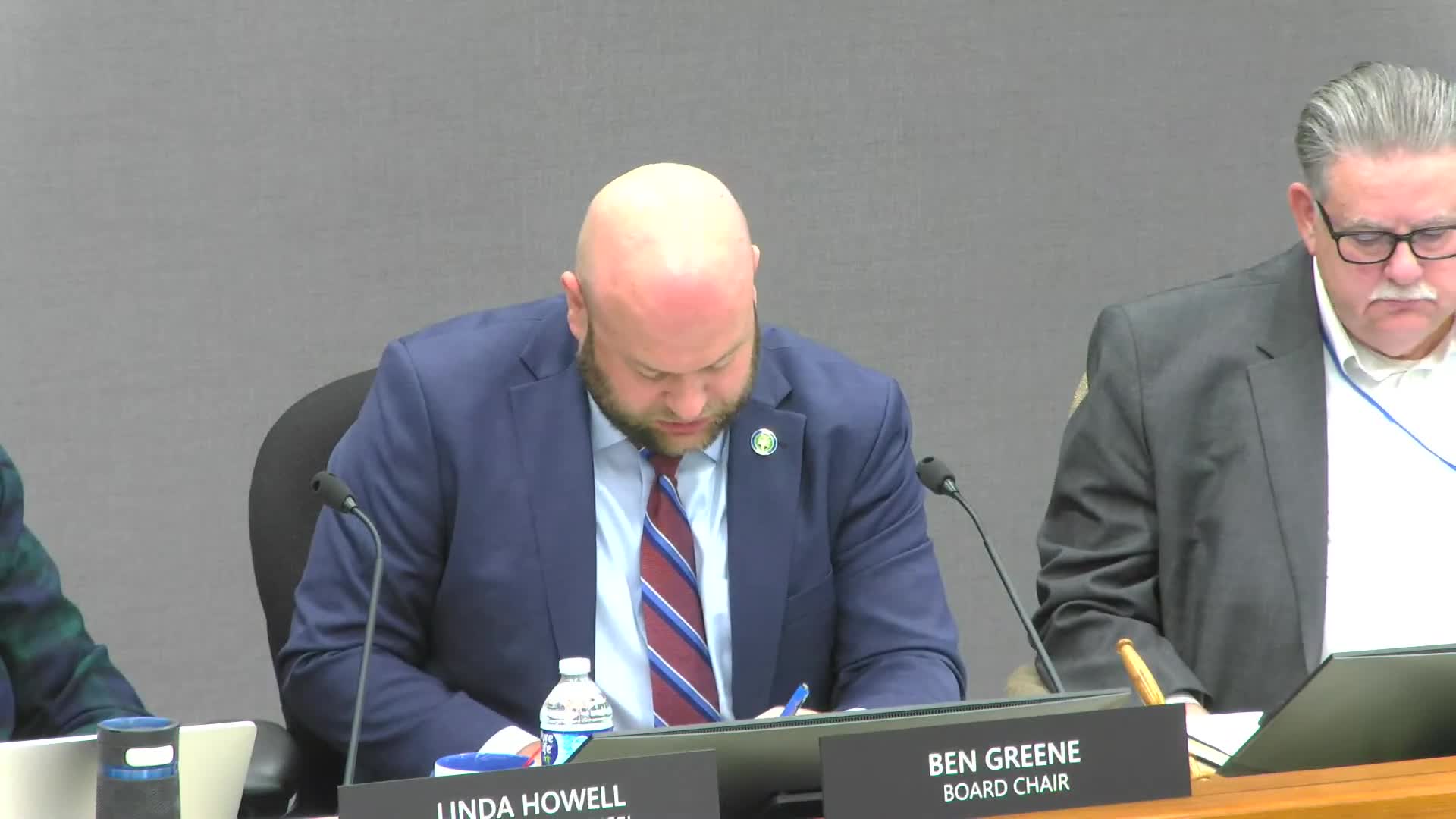Board approves Saddlebag Drain District bond, commissioners press for clearer project pipeline
October 10, 2025 | Kent County, Michigan
This article was created by AI summarizing key points discussed. AI makes mistakes, so for full details and context, please refer to the video of the full meeting. Please report any errors so we can fix them. Report an error »

The Kent County Board of Commissioners on a 21-0 roll call vote adopted Resolution 84 to approve the Saddlebag Drain District Drainage District Bond Series 2025, a financing step to pay for a maintenance project connecting the Saddlebag and Gillette drains.
The bond will fund engineering and construction to reconnect separated drain segments that county staff said have allowed sand and erosion to enter a downstream pond and critical wetland. County staff said local property owners within the district shoulder the majority of assessments, while municipalities cover a roughly 20% share split between the City of Kentwood and Grand Rapids Township.
Commissioner John Faber, who led a line of questioning, thanked the Drain Commission for recent website updates and said the added transparency has helped the public track long-running projects. "It's gotten a lot easier to track these projects over the last couple months," Faber said.
County Drain Commission staff described the project as a typical maintenance petition that became more complex because two separate drains were joined. Staff said the Saddlebag Drain originates near Meyer Gardens, runs under Cascade Road, ended for a stretch of roughly a football-field length, and then resumed as the Gillette Drain toward the City of Kentwood. That gap has allowed drainage to erode sand into a pond; staff estimated crews remove "about 20, 30 yards every six months," and warned that continued filling could inundate adjacent wetlands.
On assessments and municipal shares, Commissioner Yonker said municipalities' portion "is determined at an at-large percentage" and that the 20% municipal share is apportioned among the local units based on acreage in the district. He also said municipalities may pay assessments upfront or choose to be included in the bond financing.
Several commissioners pressed staff for broader visibility into the drain program. Faber and others asked for a consolidated listing showing where each petition or project stands in the queue; staff said a current list of projects out to bid was included in the board packet and that roughly nine more projects could come out for bids later in the year. "We should continue to show the community where their project really is in this pipeline," Faber said.
The board adopted the resolution by roll call. The clerk recorded 21 yes votes, 0 nays; the chair declared the motion carried.
The bond will fund engineering and construction to reconnect separated drain segments that county staff said have allowed sand and erosion to enter a downstream pond and critical wetland. County staff said local property owners within the district shoulder the majority of assessments, while municipalities cover a roughly 20% share split between the City of Kentwood and Grand Rapids Township.
Commissioner John Faber, who led a line of questioning, thanked the Drain Commission for recent website updates and said the added transparency has helped the public track long-running projects. "It's gotten a lot easier to track these projects over the last couple months," Faber said.
County Drain Commission staff described the project as a typical maintenance petition that became more complex because two separate drains were joined. Staff said the Saddlebag Drain originates near Meyer Gardens, runs under Cascade Road, ended for a stretch of roughly a football-field length, and then resumed as the Gillette Drain toward the City of Kentwood. That gap has allowed drainage to erode sand into a pond; staff estimated crews remove "about 20, 30 yards every six months," and warned that continued filling could inundate adjacent wetlands.
On assessments and municipal shares, Commissioner Yonker said municipalities' portion "is determined at an at-large percentage" and that the 20% municipal share is apportioned among the local units based on acreage in the district. He also said municipalities may pay assessments upfront or choose to be included in the bond financing.
Several commissioners pressed staff for broader visibility into the drain program. Faber and others asked for a consolidated listing showing where each petition or project stands in the queue; staff said a current list of projects out to bid was included in the board packet and that roughly nine more projects could come out for bids later in the year. "We should continue to show the community where their project really is in this pipeline," Faber said.
The board adopted the resolution by roll call. The clerk recorded 21 yes votes, 0 nays; the chair declared the motion carried.
Don't Miss a Word: See the Full Meeting!
Go beyond summaries. Unlock every video, transcript, and key insight with a Founder Membership.
✓
Get instant access to full meeting videos
✓
Search and clip any phrase from complete transcripts
✓
Receive AI-powered summaries & custom alerts
✓
Enjoy lifetime, unrestricted access to government data
30-day money-back guarantee

